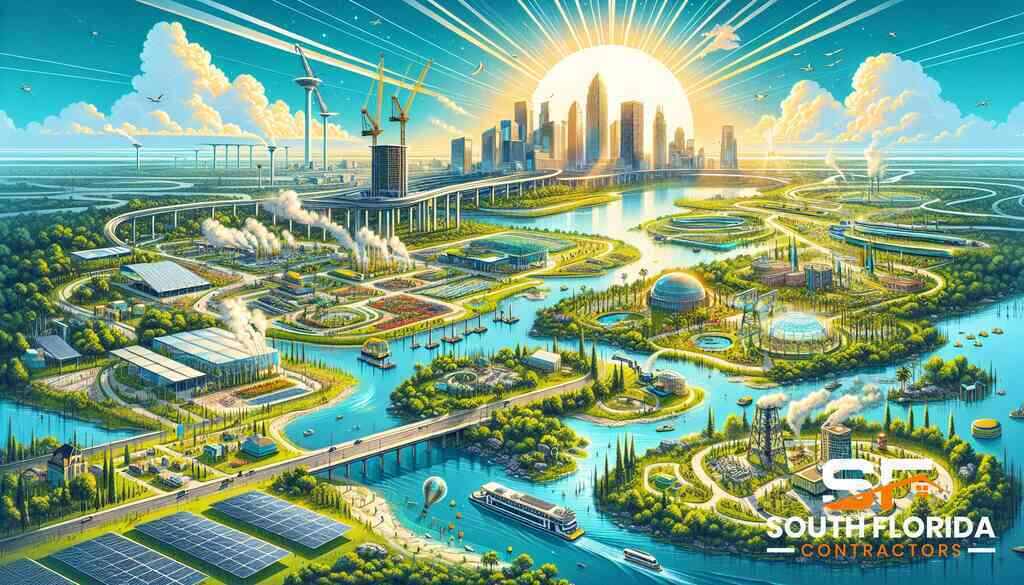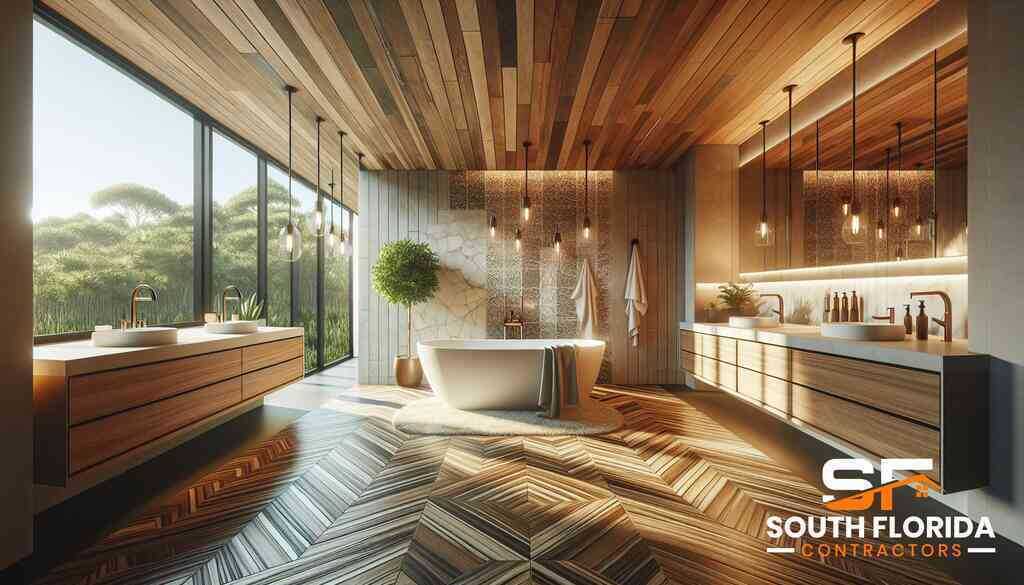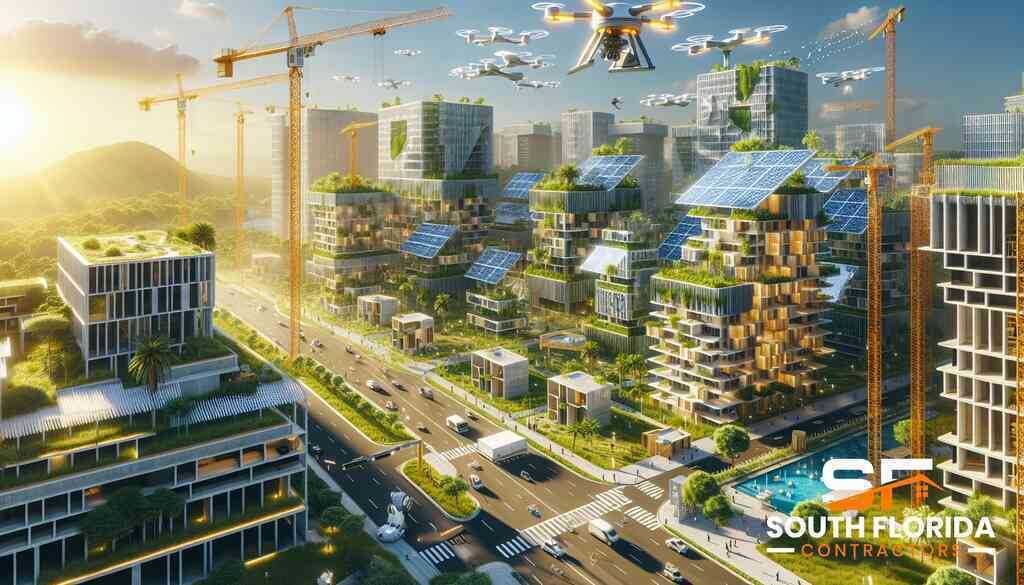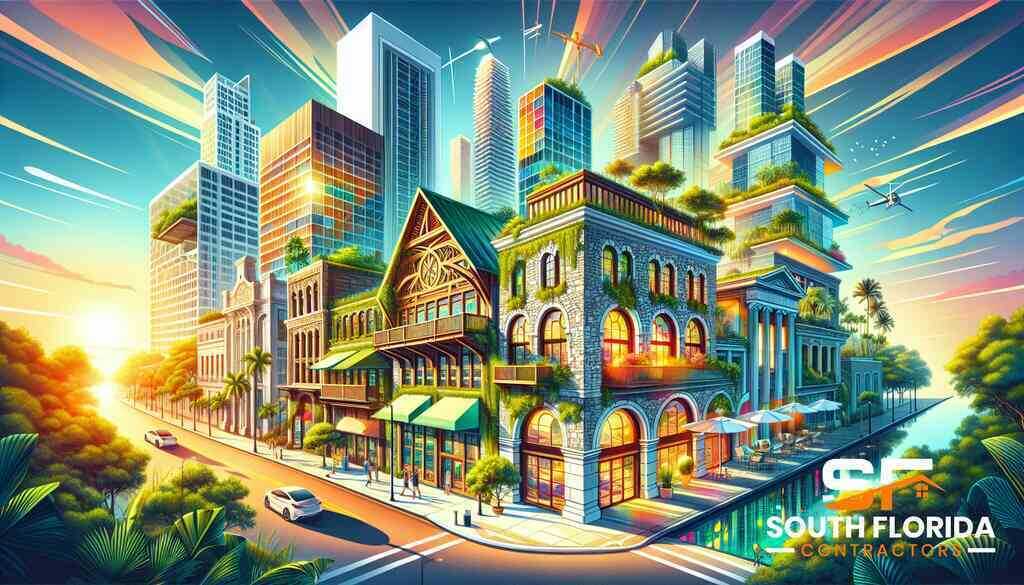
The Difference Between Traditional and Modern Construction by Local Experts
November 14, 2025
Architectural Foundations: Time-Honored vs. Cutting-Edge Approaches
Legacy of Traditional Construction Methods
Traditional construction methods have formed the backbone of architecture for centuries, embodying craftsmanship and durability. These techniques often relied heavily on locally sourced materials like stone, brick, and wood, which connected the buildings to their natural surroundings. The legacy of these methodologies can still be seen in many historic structures across South Florida, which stand as testaments to time-honored engineering practices. Additionally, traditional construction methods focused on the artisanal aspect, offering a hands-on, labor-intensive process that resulted in unique, intricate details. Understanding the distinction between traditional vs modern construction methods provides valuable insights into how these legacy practices have shaped our built environment.
Impact of Modern Construction Techniques
Modern construction techniques have revolutionized the industry, introducing efficiencies and innovations that were unimaginable in the past. The integration of advanced construction technology innovations has allowed for faster project timelines and improved structural integrity. These techniques employ prefabricated elements and machinery, reducing the dependency on manual labor. Moreover, the advent of computerized design software has allowed architects and builders to push the boundaries of creativity and functionality, creating structures that are not only aesthetically pleasing but also highly efficient. The focus on smart home construction and energy-efficient homes has further driven the adoption of these modern practices, offering sustainable solutions to urban living challenges.
Blending Historical Inspiration with Contemporary Innovation
Blending historical inspiration with contemporary innovation involves a delicate balance of preserving the essence of traditional architecture while embracing cutting-edge designs. This approach often results in structures that reflect a harmonious marriage of heritage and modernity, offering a unique aesthetic that resonates with diverse audiences. In South Florida, the architectural landscape is a testament to this blend, featuring homes and commercial spaces that pay homage to past architectural styles while incorporating state-of-the-art technologies. The evolving South Florida architectural design scene is a perfect example of how builders and architects can draw from the past to inspire forward-thinking structures. This fusion not only enhances the visual appeal of neighborhoods but also contributes to cultural preservation and economic vitality.
Evolving Material Landscapes: From Brick to Smart Components
Building Material Innovations Through the Ages
Building materials have evolved significantly, transitioning from traditional elements like stone and brick to advanced components engineered for resilience and adaptability. Early construction methods capitalized on local resources, which were not only abundant but also bespoke solutions to the environmental challenges of their era. Throughout history, shifts in technology and cultural exchanges have introduced new materials, exemplified by the advent of steel and concrete during the Industrial Revolution. These innovations laid the foundation for building material advancements, continually elevating the standards of construction practices in South Florida and beyond.
The materials used in construction significantly impact a building’s longevity and aesthetics. Traditional choices favored natural resources, which aligned with the design sensibilities of robust and enduring architecture. With advancements in industrial processes, synthetic materials, and alloys provided new opportunities for design and functionality. The ongoing evolution in materials is a testament to the industry’s constant pursuit of more efficient and versatile solutions, paving the way for groundbreaking architectural achievements.
Eco-Friendly Building Materials in Modern Architecture
The rise of environmental awareness has pivoted the focus towards eco-friendly building materials, crucial for sustainable development in modern architecture. These materials not only reduce the carbon footprint of construction projects but also enhance energy efficiency, a significant consideration for structures in warm climatic zones like South Florida. The use of recycled and renewable resources has become a defining aspect of architectural design, calling for innovative formulations that meet both aesthetic and environmental standards.
Incorporating eco-friendly materials often involves leveraging advanced technologies to create products that mimic traditional aesthetics while offering superior performance and environmental benefits. For example, bamboo and reclaimed wood are gaining popularity as viable alternatives to more conventional materials, supporting the broader movement towards sustainability in the building industry. As Green building and sustainability become integral to construction strategies, architects and builders prioritize materials that support eco-conscious initiatives.
Sustainability and Efficiency in Building Material Choices
Choosing the right materials is pivotal to achieving sustainability and energy efficiency in modern construction. The strategic selection of materials not only reduces environmental impact but also lowers operational costs, aligning with energy efficiency strategies prevalent in today’s industry. Builders and designers are increasingly adopting materials that offer enhanced durability, reduced maintenance, and superior thermal performance.
In South Florida, where energy demand is significant, utilizing materials that promote sustainability is a primary focus. From insulation advancements to innovative roofing solutions, the materials landscape continues to adapt, integrating green technologies to address the challenges of modern construction. This approach is further reinforced by the industry’s drive towards creating buildings that are not just functional but pioneering in their application of Energy efficiency strategies. By prioritizing sustainable practices, the construction sector plays a vital role in shaping a more responsible and efficient built environment.
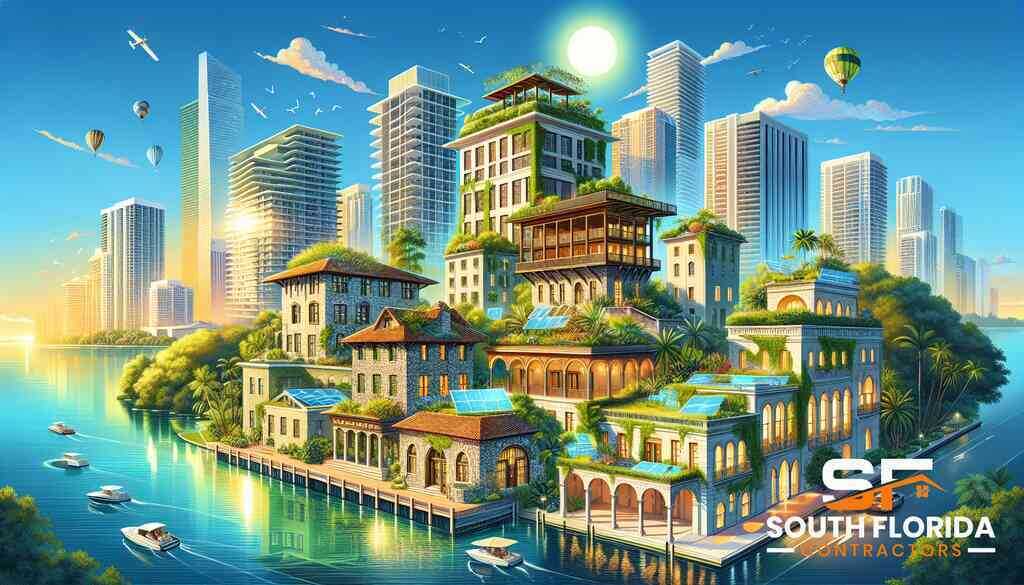
Design and Construction: Balancing Aesthetics with Functionality
South Florida Architecture: Reflections of Tradition and Modernity
South Florida architecture is a melange of time-honored traditions and contemporary design, a unique marriage that captivates all who encounter it. The area boasts historical landmarks that echo the craftsmanship of bygone eras, melding seamlessly with cutting-edge structures that epitomize modern aesthetics. This architectural duality embodies the essence of South Florida construction, where the history of construction serves as an inspiration to innovate. These designs not only capture the spirit of the region but also cater to diverse lifestyle preferences, reflecting the local culture’s versatility.
Architects in South Florida often draw inspiration from Mediterranean Revival and Art Deco styles, blending them with contemporary lines and sustainable building practices. This fusion ensures that new constructions complement the historic narrative while meeting modern environmental standards. The strategic use of materials and light in these structures further enhances the aesthetic appeal while maintaining functionality. Beyond mere appearance, this architectural approach addresses local climate concerns, promoting energy efficiency and durability. As such, South Florida continues to set benchmarks in integrating traditional and modern architectural elements.
Architectural Design Trends Shaping the Future
The evolution of architectural design in South Florida is not static; it dynamically responds to emerging trends and innovative technologies. Recent developments show a shift towards eco-conscious designs, where sustainability meets sophisticated aesthetics. Features like green roofs, solar panels, and rainwater harvesting systems are increasingly incorporated into architectural blueprints, heralding the dawn of a new architectural era. These trends demonstrate the industry’s commitment to harnessing new technologies for enhanced living experiences, echoing global movements in sustainable architecture.
Another trend shaping South Florida’s architectural horizon is the incorporation of smart home technology, which facilitates remote monitoring and control of domestic systems. This innovation reflects a broader shift towards creating homes that prioritize convenience and security, essential aspects of modern living. Designers are also experimenting with materials that offer both style and functionality, such as dynamic glass that adjusts to light conditions, creating adaptable spaces. This visionary approach positions South Florida as a leader in Innovations in South Florida home construction, drawing national attention to its progressive and sustainable design methods.
Retrofit vs. New Build: Tailoring Spaces for Modern Needs
In the realm of construction, the decision between retrofit and new build is pivotal in shaping spaces to meet modern requirements. Retrofitting involves adapting existing structures to improve efficiency and functionality, a technique that preserves the historical essence while integrating modern comforts. This method is particularly popular in districts rich in heritage, where maintaining the architectural character is as crucial as updating the infrastructure. The growing emphasis on sustainability further amplifies the relevance of retrofit approaches, leading to enhanced energy performance and reduced construction waste.
Conversely, new builds offer endless possibilities for completely customized designs, free from the constraints posed by pre-existing architectures. This approach allows architects to leverage the latest technologies and materials, providing opportunities to create state-of-the-art living environments. Tailoring spaces involves more than just physical alterations; it encompasses the strategic planning of spaces for optimum utility and comfort. By understanding Renovation vs Restoration techniques, stakeholders can make informed choices that align with their vision and neighborhood demands. Both methods, when executed with precision, contribute significantly to South Florida’s reputation as a hub for innovative construction.
Performance and Longevity: Engineering the Future of Structures
Structural Engineering Differences Across Eras
Structural engineering has undergone a remarkable evolution from its early reliance on empirical design methods to today’s advanced computational models. Traditional construction emphasized masonry and timber framing, often dictated by regional availability and environmental conditions. However, modern engineering leverages sophisticated algorithms and simulation tools to predict structural behavior under various loads and forces, enhancing both safety and durability. These advancements allow structural designs to push boundaries, resulting in iconic skylines and innovative buildings globally and in South Florida. By understanding general contractor responsibilities, one can appreciate the role of such experts in bridging historical methods with contemporary demands. The integration of comprehensive models ensures that today’s structures are built not only to last but also to stand resilient against increasingly complex challenges posed by nature and human activity.
Green Building Advantages and Renewable Resources
Green building practices have become pivotal in addressing environmental concerns and reducing carbon footprints in construction. By prioritizing renewable resources, architects and builders design structures that harmonize with their natural surroundings, particularly in eco-sensitive areas like South Florida. The benefits of these methods include lower energy costs, improved indoor air quality, and reduced waste. Innovations such as solar panels, geothermal heating, and efficient insulation materials exemplify the shift toward sustainability. The construction cost and lifecycle management benefits further underline the economic advantages of adopting green building techniques. The choice of materials and building systems not only seeks to diminish ecological impact but also positions structures to adapt to future environmental regulations. Furthermore, the inherent durability and energy savings realized through green building methods are essential for long-term value and environmental stewardship.
Implementing Smart Home Construction and Energy-Efficient Systems
Implementing smart home construction encompasses the integration of technology to create more efficient and connected living spaces. This includes systems that optimize energy use, enhance security, and improve comfort levels while ensuring ease of use. Smart technologies like automated lighting, climate control systems, and energy-efficient appliances play significant roles in modern home construction, providing significant returns on investment for homeowners. Additionally, employing sensors and IoT technology enables real-time monitoring and control of home environments, contributing to a more responsive and convenient lifestyle. The industry’s focus on smart systems aligns with custom home development projects designed to meet the unique needs of residents in South Florida. As technology continues to advance, the seamless integration of these intelligent systems into the fabric of home design will be integral to meeting the demand for personalized, sustainable, and future-proof residences.
Planning and Execution: Crafting a Cohesive Construction Process
Construction Technology Advances Transforming Timelines
The integration of advanced technologies in construction has significantly transformed project timelines, enabling efficiency like never before. These innovations include state-of-the-art construction planning and management software that streamlines coordination and project tracking. The use of Building Information Modeling (BIM) allows for precise planning and error reduction, making complex projects more manageable. In the realm of construction services, prefabrication and modular construction techniques have emerged, helping to reduce on-site construction time and enhance precision in South Florida projects. These advances are reshaping the industry’s capabilities, offering improved project delivery and setting new benchmarks in both residential and commercial construction. By leveraging the latest technology, local experts are crafting processes that not only consider speed but also quality and accuracy.
Building Code Compliance: Meeting Evolving Standards
In South Florida, building code compliance is pivotal in meeting safety and regulatory standards. These codes evolve continually, influenced by environmental considerations and new construction regulations in the state of Florida. Understanding these changes is essential for maintaining compliance and ensuring the durability and safety of structures. Contractors in South Florida are adept at navigating these complexities, working closely with regulatory bodies to implement up-to-date practices. This diligent approach not only safeguards the interests of clients but also strengthens the reputation of local contractors as responsible and reliable service providers. Building code adherence ensures structures are designed to withstand challenges, ranging from climate considerations to structural integrity, ultimately contributing to community resilience and safety.
Building Life Cycle Management: Ensuring Durability
Life cycle management in construction involves an approach that focuses on longevity and sustainable practices throughout a building’s lifespan. This concept emphasizes building maintenance, upgrades, and refurbishment to extend usability and value over time. Using principles from architectural design evolution, South Florida contractors implement strategies that optimize resources and minimize waste, catering to a growing demand for sustainable home additions. Effective management incorporates regular inspections and innovative materials to preemptively address wear and tear, ensuring that structures remain functional and attractive long after their completion. As sustainability becomes a cornerstone of modern construction, life cycle management techniques position South Florida’s architectural landscape at the forefront of eco-friendly and durable building practices.
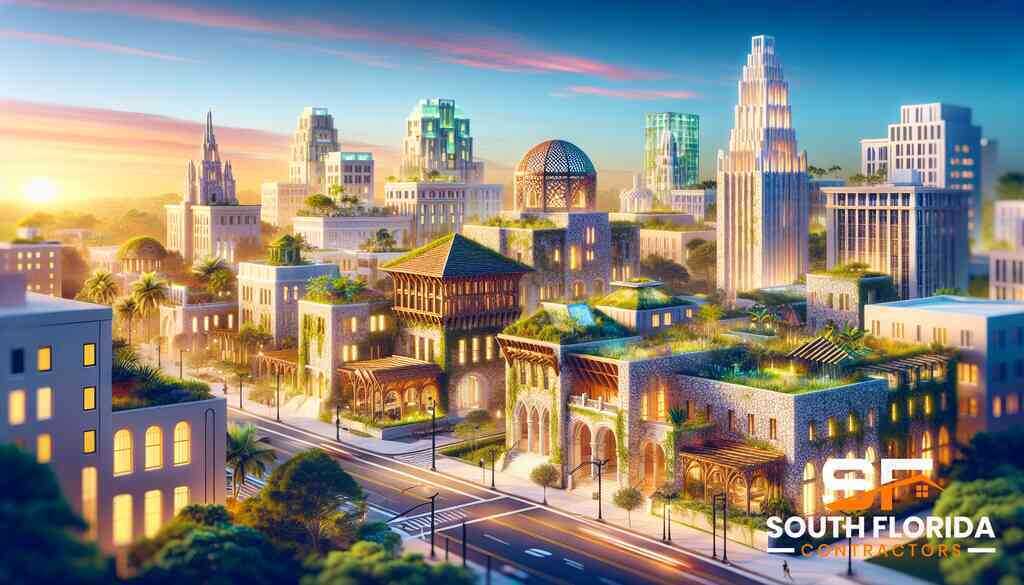
Conclusion: Crafting Tomorrow’s Built Environment
Impact of Climate on Construction Decisions
The impact of climate on construction decisions has become increasingly significant in shaping the future of building practices. With South Florida’s unique subtropical climate, contractors are continuously adapting their methods to ensure resilience against extreme weather conditions. This includes utilizing materials that withstand high humidity and intense sunshine to maintain structural integrity. Such geographical considerations necessitate a deep understanding of construction regulations in Florida, which guide the adoption of adaptive construction practices. Local experts emphasize the importance of designing buildings that are not only aesthetically pleasing but also capable of enduring harsher climates, showcasing a commitment to sustainable and climate-resilient construction solutions.
Urban Development Trends and Societal Needs
Urban development trends in South Florida reflect a profound response to evolving societal needs, integrating modern amenities with classic design principles. The rise of mixed-use developments underscores a trend toward compact, community-oriented environments that blend residential, commercial, and recreational spaces seamlessly. These projects cater to the demand for accessible urban living, focusing on connectivity and convenience. Incorporating commercial construction strategies helps businesses thrive within these dynamic urban landscapes. Architects and planners are tasked with balancing growth and sustainability, integrating public green spaces and pedestrian-friendly designs. This holistic approach not only enhances the livability of cities but also addresses the challenges posed by rapid urbanization, setting a blueprint for future urban planning.
Merging Old World Techniques with New World Necessities
Merging old world techniques with new world necessities involves a delicate synthesis of heritage and innovation. The construction landscape in South Florida is enriched by its history, with colonial and Art Deco influences interwoven into modern designs. By incorporating traditional craftsmanship with cutting-edge technologies, builders can preserve cultural heritage while meeting contemporary demands. This fusion achieves a harmonious balance, creating spaces that respect the past yet embrace the future. Trying innovative renovation methods enables the revitalization of classic structures to fulfill modern needs, ensuring functionality without sacrificing historical essence. Such projects not only honor traditional building techniques but also showcase the transformative potential of modern construction practices. This dynamic interplay between old and new stands as a cornerstone of the region’s architectural evolution, contributing to a sustainable and culturally rich built environment.
Frequently Asked Questions
Question: What are the main differences between traditional construction methods and modern construction techniques in terms of building material innovations?
Answer: Traditional construction methods rely on locally sourced materials like stone, brick, and wood, known for their durability and connection to natural surroundings. In contrast, modern construction techniques leverage advanced building material innovations such as prefabricated elements, steel, and concrete to enhance structural integrity and efficiency. These advancements allow for faster project timelines and contribute to the creation of energy-efficient homes. South Florida contractors specialize in blending these methods to offer a balance of heritage construction preservation with modern smart home construction technologies.
Question: How do South Florida Contractors incorporate sustainable building practices into both traditional and modern construction projects?
Answer: South Florida Contractors prioritize sustainable building practices by integrating eco-friendly building materials and energy-efficient systems into their projects. For traditional builds, this might involve using reclaimed wood or bamboo, while modern projects may incorporate green building advantages such as solar panels and rainwater harvesting. This approach ensures that both traditional and contemporary home designs meet modern environmental standards, reducing the carbon footprint and enhancing energy efficiency in South Florida architecture.
Question: How does the blog titled The Difference Between Traditional and Modern Construction by Local Experts highlight the impact of climate on South Florida construction decisions?
Answer: The blog discusses how South Florida’s unique climate, including high humidity and intense sunshine, influences construction decisions. South Florida Contractors adapt by using materials that can withstand these conditions while maintaining structural integrity. The blog highlights the importance of building code compliance and the use of construction technology advances to create climate-resilient structures. With a focus on sustainable building practices and smart home construction, South Florida Contractors ensure that projects are designed to endure and thrive in the region’s challenging climate.
Question: What retrofit construction methods do South Florida Contractors use to tailor spaces for modern needs while preserving their heritage character?
Answer: South Florida Contractors excel in retrofit construction methods that adapt existing structures for improved efficiency and functionality while preserving their heritage character. This includes upgrading infrastructure with modern materials and integrating energy-efficient technologies such as smart home construction systems. By employing these methods, contractors can maintain the architectural character of historic districts while ensuring the buildings meet contemporary requirements for comfort and sustainability. This approach is a testament to the craftsmanship and innovation inherent in the local construction industry.
Question: How are urban development trends influencing residential and commercial construction strategies in South Florida?
Answer: Urban development trends in South Florida emphasize mixed-use developments that blend residential, commercial, and recreational spaces to create community-oriented environments. South Florida Contractors leverage commercial construction strategies and residential construction evolution to meet societal needs for connectivity and convenience. By integrating sustainable building practices and focusing on energy efficiency strategies, these developments address the challenges of rapid urbanization while enhancing the livability and functionality of urban spaces. This forward-thinking approach positions South Florida as a leader in innovative and sustainable construction.
